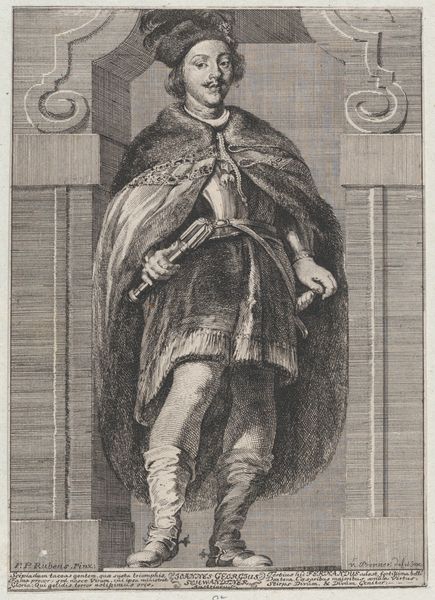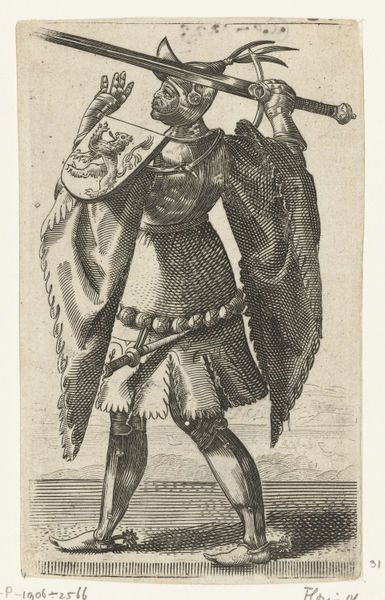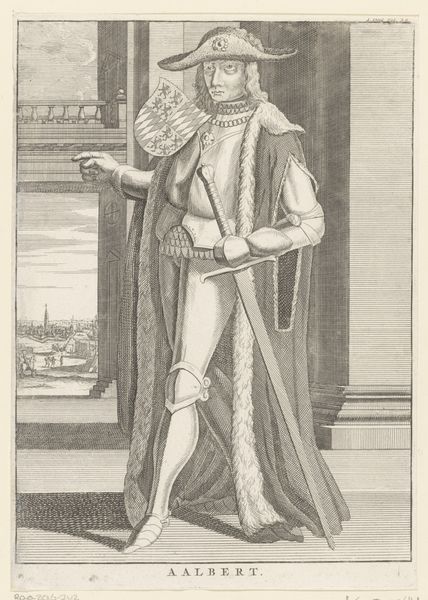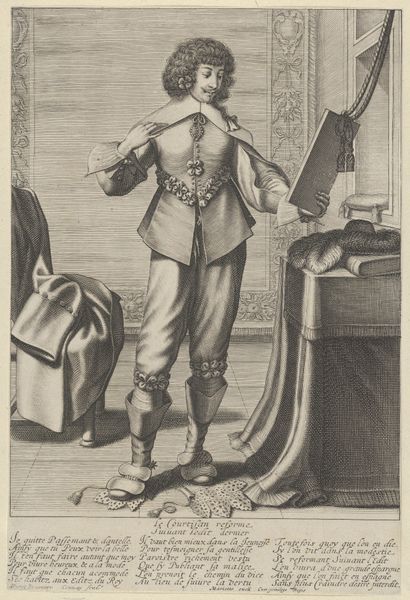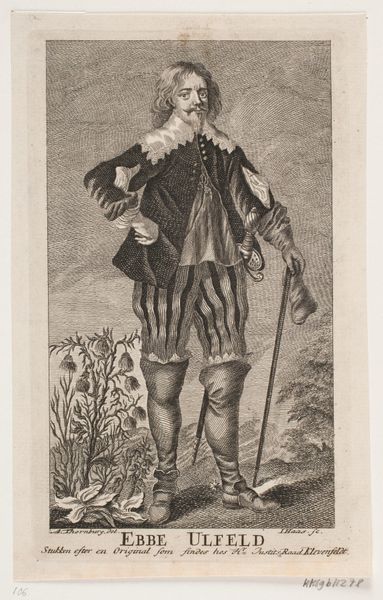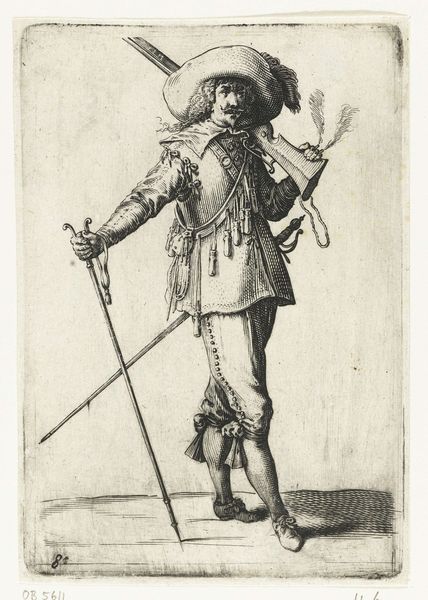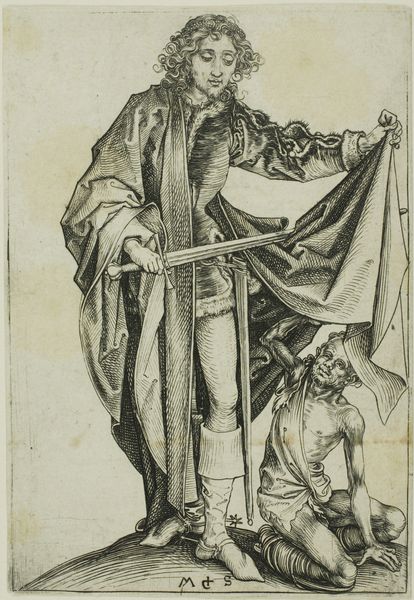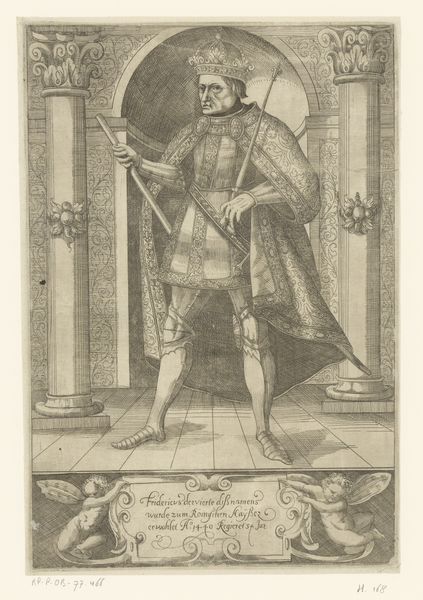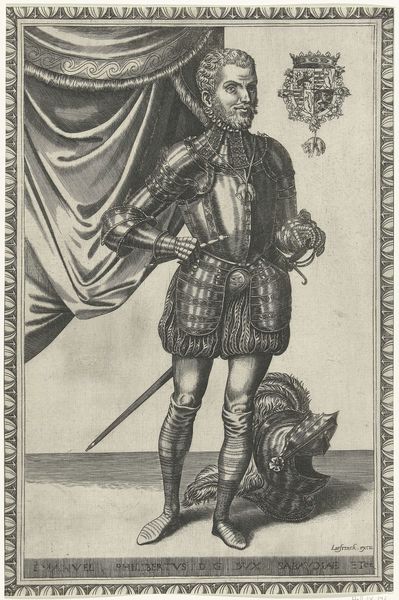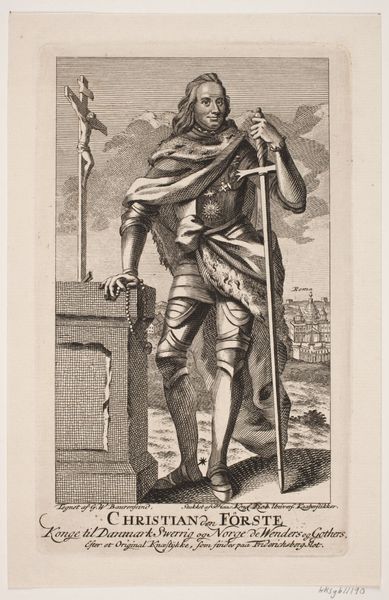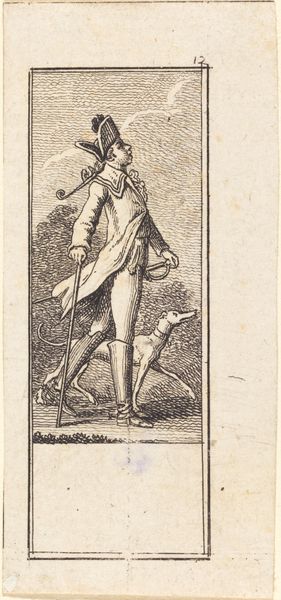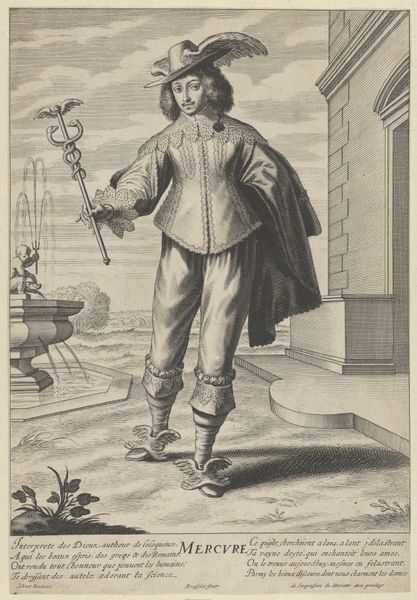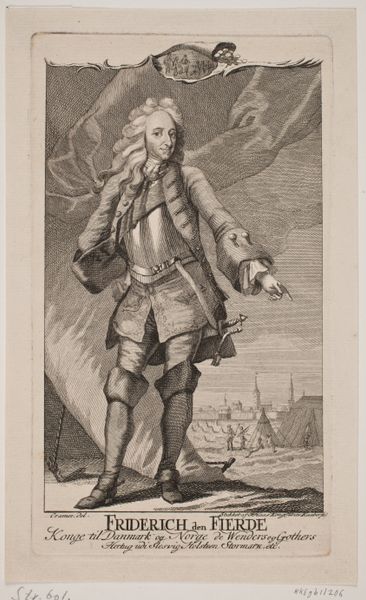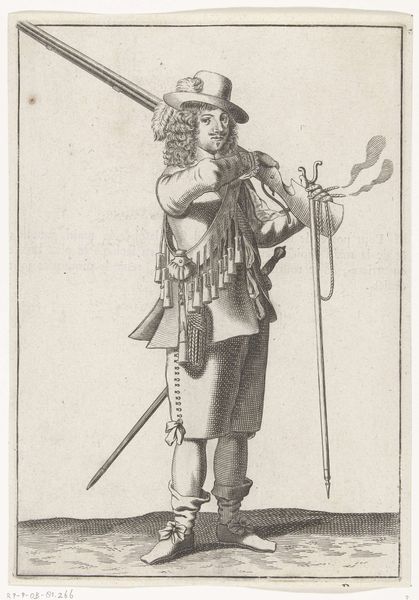
Portrait of Cardinal Infante Ferdinand of Austria 1728
0:00
0:00
print, engraving
#
portrait
#
baroque
# print
#
history-painting
#
engraving
Dimensions: Sheet (Trimmed): 9 in. × 6 5/16 in. (22.9 × 16 cm)
Copyright: Public Domain
Curator: Today, we’re looking at "Portrait of Cardinal Infante Ferdinand of Austria," an engraving made in 1728, currently held at the Metropolitan Museum of Art. The engraver was Anton Joseph von Prenner, after a work by Peter Paul Rubens. Editor: Immediately striking! The textures in the fur and feathered hat really jump out. Given it’s an engraving, there's such a compelling use of line to simulate dimensionality and suggest the opulence of his status. Curator: Absolutely. What I find particularly interesting is the context in which Ferdinand existed. Here we see the figure of Ferdinand as both prince and cardinal, but what kind of ideological conflict did that represent? Editor: And think about the means to reproduce and disseminate these images at the time. An engraving made multiple copies available relatively cheaply and quickly. To what extent could common folks actually *see* this image and perhaps reconsider their notions about divine authority? Curator: Precisely. And note that Ferdinand himself played a key role in political and military affairs during the Thirty Years' War. The portrait therefore becomes a tool of power, embedding his likeness and status in collective consciousness. The very *act* of depiction is a negotiation of political authority in Baroque Europe. Editor: But what did the artist use, and *how* were these things produced? How many copper plates would they have used? Consider all that artisanal labour… What were the socio-economic factors enabling the trade and consumption of such imagery? I think often of what these engravings really cost for an average tradesman to procure! Curator: It is certainly revealing to consider. Thank you, your points highlight the layers of power dynamics embedded within this work. The image itself offers us so much more beyond surface depiction. Editor: Yes, it truly serves as a poignant artifact that helps us consider how value and representation are constructed by means of artisanal methods in a context of evolving economic, cultural and political circumstances.
Comments
No comments
Be the first to comment and join the conversation on the ultimate creative platform.
